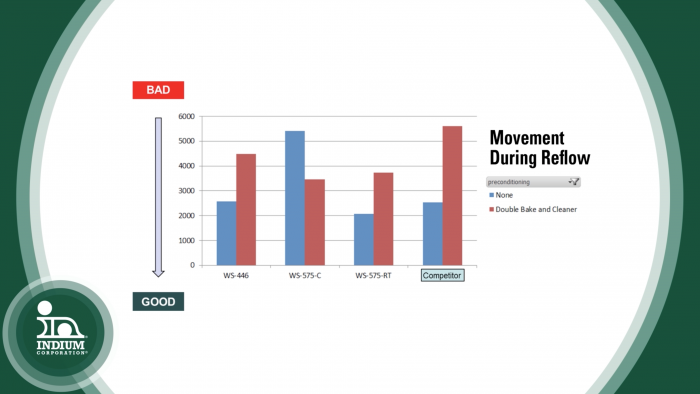Phil Zarrow: This video is for anyone interested in the solderability challenges of flip-chip/BGA balling.
Andy, solderability is a challenge for the flip-chip/BGA. Can you describe the challenges of the one-step process?
Andy C. Mackie, PhD MSc: Many of our customers are aware that after the series of different processes that lead to the final balling step when the substrate is turned upside down, and the low-cost copper OSP metallization on the bottom surfaces are exposed, the final pin transfer and ball attach, that the copper OSP is really not in a good condition. That's because of the series of drying steps, re-flow steps, as well, for the flip-chip that's gone onto the top surface, that over-molding, and ablation, and so on. A whole series of steps has been gone through, and the material on the bottom is just not in a good condition.
Phil Zarrow: What is the difference between one-step and two-step approaches?
Andy C. Mackie, PhD MSc: Okay. The two-step approach, or the pre-fluxing approach, is used, again, because the copper OSP is in a very badly oxidized condition after the preconditioning it's been through, necessarily, as part of flip-chip/BGA assembly flow. Because the copper is not in a good condition, it's oxidized and so on, when you turn the substrate upside down, usually a pre-fluxing step is done, in order to simply prepare the OSP in the first place for the ball attach process on the bottom. A one-step process is something that has to be undertaken very seriously. You have to do a lot of reliability testing. It's been proven by our customers to be able to eliminate this first step. A one-step process allows just simply the fluxing of the bottom pads without a pre-fluxing step.
Phil Zarrow: So, the one-step process would be more desirable, but you have to have the right material?
Andy C. Mackie, PhD MSc: Exactly. You have to test it. It does eliminate all of the problems with the two-step process that involves warpage, changes in the units per hour, and so on. We've done testing that simulates a worst case scenario of the preconditioning of the OSP. It's proven that not only does the solderability show an improvement versus the competitor material, but also the so-called movement during re-flow, which is an Indium test that we've developed ourselves, it shows that the material holds the ball in place much better even after a series of pre-treatment steps.
Phil Zarrow: Very good. Where could we get more information?
Andy C. Mackie, PhD MSc: As always, Phil, you can go to www.indium.com or email me at amackie@indium.com.
Phil Zarrow: Very informative. Thank you so much, Andy. I appreciate it.
Andy C. Mackie, PhD MSc: Phil, thank you very much. My pleasure.


